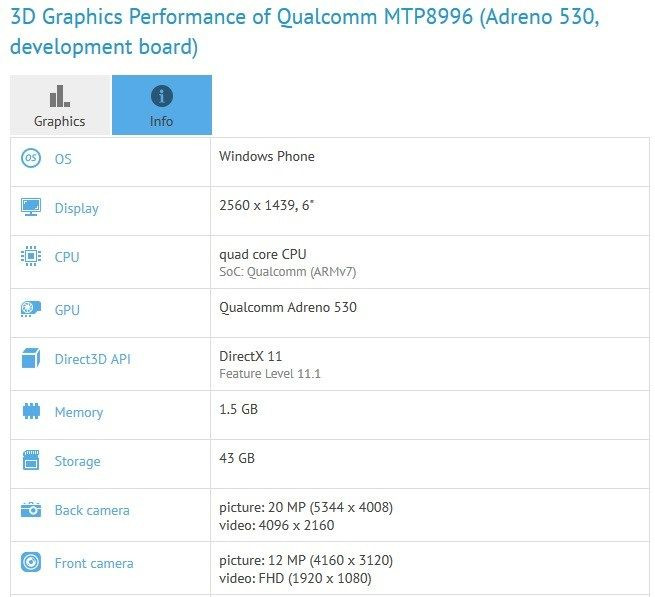Snapdragon 820-Powered Windows 10 Handset With 6-Inch Display Visits GFXBench

Towards the end of December, a Windows 10 device named “HP Falcon” was spotted with Snapdragon 820 on board. Now, a second device with the same chipset has visited the GFXBench benchmark test site.
According to Nokia Power User citing the GFXBench report, the unnamed Windows 10 handset comes with a humongous 6.0-inch display, aided by a QHD screen resolution. This device sports a killer 20-megapixel rear-facing camera unit, in addition to a very-generous 12-megapixel front-facing shooter for selfies.
The hardware configurations are backed by a modest 1.5 GB of RAM and it apparently comes equipped with 43 GB of native storage space. Usually, the 43 GB storage specification marked in benchmark sites translates to 64 GB of overall storage capacity.

The listing also says the Snapdragon 820 chipset will make use of a quad-core CPU. To be specific, the S820 comes packed with Qualcomm’s own quad-core Kryo processor, clocked at 2.2 GHz. Plus, the graphics side of things is controlled by a powerful Adreno 530 GPU.
Not to forget, this silicon supports Quick Charge 3.0 technology and tri-band Wi-Fi. The S820 backs LTE Cat. 12 connectivity with the ability to provide up to 600 Mbps downlink speed and LTE Cat. 13 with the ability to offer uplink speeds of up to 150 Mbps. This chipset is manufactured by following the well-optimized 14nm process with 64-bit architecture.
The Adreno 530 GPU will reportedly be 40 percent faster than the predecessor Adreno 430, housed in the overheating issue laden Qualcomm Snapdragon 810. Qualcomm has also vouched that there will be no overheating problems like last year.
Nevertheless, readers are advised to take the new Windows 10 Mobile-powered unnamed device with the proverbial pinch of salt as we could not confirm the authenticity of the benchmark report.
© Copyright IBTimes 2024. All rights reserved.





















